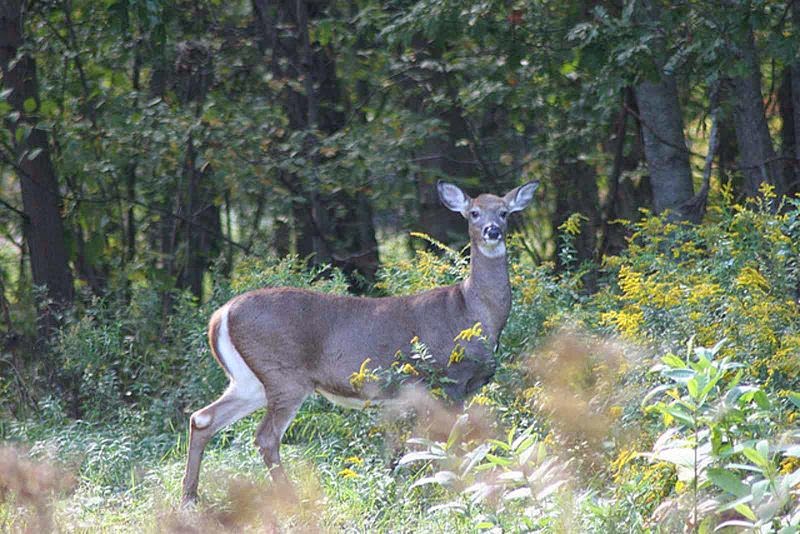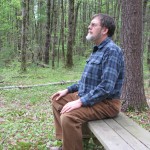When Nora, Peter’s grandmother, lived with us, our household was the nucleus of an active local Pagan community. Over time, dementia eroded more and more of Nora’s ability to retain anything she learned about in the present, so she wound up discovering again and again that she was living in a family of Pagans.
Over and over, we would have made some reference to our Paganism, and Nora, having forgotten about it for the time being, would ask us to explain again what it was we believed. We would explain, yet again, about all of life being sacred to us, and nature being the source of our inspiration.
Each time we did this, we would reach the point in our discussion where she would protest, quoting the line from Tennyson about “Nature, red in tooth and claw.” Nevertheless, we would insist that that was where we looked for the holy, and eventually, she would exclaim (just as she had the time before that): “Well, then, you’re all heathens!”
When we agreed with her, she would nod with satisfaction at having figured us out, and add, “Well. That’s all right then.”
I’m still a “heathen.” But Nora had a point. Nature is red in tooth and claw. And it certainly can be challenging to accept.
How can the world be good, and have such suffering within it? How can we believe in the presence of anything compassionate, loving, or engaged with us humans in the slightest, given the hard realities of hunger, disease, old age, and death? How can it possibly be that “love [is] Creation’s final law” when so much of the world is such a mess?
One way of answering the question is simply to dismiss the world as fallen and flawed. I don’t need to remind my Pagan readers that this has been the traditional approach of Christianity. If we accept that the world is not sacred, is rather broken and corrupt, then the apparent lack of love we find in its daily tragedies and deformities becomes unsurprising.
But how, as a Pagan, do I reconcile an unfallen creation with the state of the world?
Oh, I can dither for a little while, focusing on human choices to live out of balance with the natural world. But however I frame it, whether I choose to ignore the way that humans are very much a part of nature or to accept it; whether I choose to see humans as fallen or no; I ultimately have to admit that the natural world has a lot of things in it that repel, disgust, and horrify me.
HIV. Stillbirths. Heartworms and tapeworms and parasitic wasps. It ain’t all fluffy bunnies and sunsets, that’s for sure.
OK. I realize this a kind of grandiose way of leading up to it. But the fact is, I got bitten by a tick yesterday.
Two ticks, in fact. Despite the recent frost, despite taking all the normal precautions, I got bitten by two ticks, and one of them has absolutely left some kind of infection behind it. Hopefully not Lyme disease, because, honestly, that’s all I need in my life right now.
 |
| Photo credit: Tomfy |
Ticks. Ugh. (Shuddering)
I hate ticks.
For years now, I’ve suffered from recurrent nightmares about a variety of worms, bugs, planarians, and macroscopic amoebae colonizing my body. My nightmares are like the standard Bug Larvae Under the Skin scene in a certain type of horror movie, only better lit. My dreams not only terrify me, they make me wake up in a cold sweat, feeling like I want to take a shower inside my body as well as outside it.
Oh. I’m also an arachnophobe. Got some great dreams about spiders, too. So, given my fear of parasites and my fear of spiders, ticks completely freak me out.
Did I mention? I hate ticks.
Here’s the thing. Though it took me a few minutes after the shuddering, flinching, ghastly process of getting the damn things pulled off me to remember it, I got those ticks in the course of an incredibly beautiful walk in our woods.
It was twilight, or even a little past it, and the woods were fading into murk, but the leaves of the hornbeams, which have all turned a brilliant, cheddar-cheese yellow, stood out like a dream against the gloom. Because the hornbeams are all saplings of about the same age, the effect was of a cloud of yellow lights, almost like paper lanterns, hovering ten feet above the forest floor. High, high up, the more mature maple trees glowed, too, in orange and pale yellow and still a bit of green, and everywhere black tree limbs and the green-black of hemlock branches framed the night.
Peter and I walked through a night that was almost silent, except for the tiny, reedy voices of night birds, and the distant sighing of traffic. We wrapped ourselves in the wonder of grey stones, brown, tea-smelling leaves underfoot, and paths now easier to see than in the hurly-burly of summer growth.
We found the chestnuts–the saplings left behind, still insistently trying to grow and overcome the lethal blight that has destroyed their kind. And I got to see for myself just what shade of yellow chestnut leaves turn in the dark night of a New England fall.
And it was totally worth it. Horrible as the mere thought of a tick makes me feel, let alone actually finding them, heads sunk into my skin, they are just the price of admission for belonging to a real, living ecosystem.
Not just the forest, but I myself am a part of this ecosystem. Ticks? Who am I kidding. I’ve long since been colonized by mites and viruses, bacteria and fungi of all sorts. I am myself an ecosystem, a forest, a jungle. Ticks, and the Lyme bacteria I fear they hold, are just more passengers on an already crowded vessel–my body.
We are not truly separate from one another. There are no safe, clean, reliable places in any living system.
The very cells of my body, whose metabolism allows me life, may one day mutiny against my rule, and kill me. But without that possibility, I die now, this moment. Life evolves. Life is opportunistic. Life sees a chance and it takes it, whether it means colonizing the body of a caterpillar, chasing down and eating a rabbit, or a blood meal from a human host. Life kills, and life is dying every day.
Because that’s what life is.
I’ve always frowned on those people who claim to love kittens, but have no use for cats. The nature of a mature cat is always there, latent within the kitten. There are no kittens without cats, and if we could, somehow, freeze young cats forever at the age they are “cutest,” we would not have done them honor, but destroyed something essential to who they are. We need, instead, to love them whole–kitten and cat–or not at all.
When I say I want to embrace life, I must acknowledge that that means I must embrace death. When I say I love my woods, I must own that my woods include white-footed mice, white-tailed deer, and the ticks that prey on them and on me.
None of us are our Mother’s favorite children. And all of us are.
We must embrace the whole of the wheel of life, not just the parts we think we love. Because there isn’t any such thing as life without death, woods without parasites, or love without loss. It’s all one at the root.
 |
| Photo credit: Thompson Greg, US Fish and Wildlife Service |
I still feel disgusted and horrified by the sight of a tick on my body. But I know: the tick joins me to the deer, to the forest. To the trees.
It’s worth it. That’s what Paganism is, I think. It’s looking Nora in the eye, and saying, Yes. Red in tooth and claw.
And worth it.
I know no better world, and ask for none.















